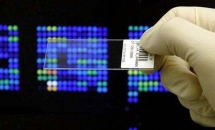Despite the unquestionable progress that has been made in the control of the main risk factors (principally cholesterol), cardiovascular pathology is still the main cause of mortality in developed countries. The emergence of statins and other lipid-lowering drugs and their intensive use has helped improve the control of the plasmatic concentration of cholesterol in the general public. Even so, many people develop early arteriosclerosis and suffer acute cardiovascular episodes despite having normal cholesterol levels. Progressive knowledge of the molecular mechanisms that give rise to the development of arteriosclerotic lesion have revealed that just as important as the amount of cholesterol in the blood is the quality of same. Thus, the concepts of "bad cholesterol" and "good cholesterol" have become popularised in recent years. Bad cholesterol, that is to say, the cholesterol associated with low density lipoproteins (LDL), is what is responsible for the accumulation of cholesterol in the arterial wall that gives rise to arteriosclerosis. In contrast, good cholesterol, or the cholesterol associated with high density lipoproteins (HDL), is responsible for removing the excess cholesterol from the arteries. However, once again, basic research has shown that while the LDL/HDL relation in blood is important and can be used as a predictive factor for cardiovascular risk, the functionality of these lipoproteic particles is what will determine the progression of the arteriosclerotic pathology. Not all LDL or HDL particles have the same capacity for inducing or inhibiting the accumulation of cholesterol. Minor sub-fractions of LDL that have been chemically modified or with a high susceptibility to modification play a key role in the atherogenesis. Likewise, the composition of the HDL modulates their anti-atherogenetic potential.
As a result of this, the latest efforts made in the development of new drugs have been very specifically focused on modulating these qualitative properties of lipoproteins. The aim of this lecture is to show how the discoveries obtained through basic research have been translated into the development of new drugs aimed at these new therapeutic targets.
Cycle: Challenges of the 21St Century the Voice of Medicine, II
Organized by: Residence for Researchers, Fundació Clínic Barcelona, IDIBAPS and RESA
